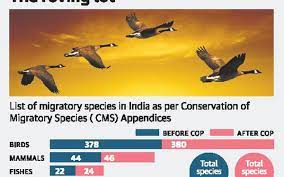Major Soils in India-भारत में प्रमुख मिट्टी
Soils in India can be classified into 8 categories: alluvial, black, red, laterite, forest, arid & desert, saline & alkaline and peaty & organic soils.
How is soil formed ?
Soil is formed by the process of weathering during which rocks break down to form soil particles.
This breaking down of rock occurs over a period of millions of years.
Weathering can be -physical, chemical, and biological.
The bedrock breaks down into pieces due to the effects of heat, cold, water, wind, and rain.
Alluvial soil [43%] ,
Red soil [18.5%] ,
Black / regur soil [15%] ,
Arid / desert soil,
Laterite soil
1-Alluvial soil-
How alluvial plains are formed?
An alluvial plain is a largely flat landform created by the deposition of sediment over a long period of time by one or more rivers coming from highland regions, from which alluvial soil forms
Constitute the largest soil group in India, constituting 43 % of the total land surface. It is derived from the deposition of silt carried by rivers and are found in the Great Northern plains from Punjab to the Assam valley Alluvial soil are generally fertile .
Rich in –
These soils are rich in potassium.
Lack in-
They lack- nitrogen and tend to be phosphoric .
New alluvium is termed as………. Khadar and …….old alluvium is termed as……. Bhangar.
Color-
Grey color
These soils are rich in potassium due to higher content of illitic mineral (clay minerals.)which is rich source of potassium.
This are formed by the deposition of weathered material by water i.e fluvial( found in a rive) deposition.
Phosphorus is most unavailable mineral and it converts into its other unavailable forms, called as secondary reaction products even after the application in form of fertilizer.
phosphorus is low generally in all types of soil other than Alluvial soil and mainly governed it's availability
Useful for cultivation of-
Rice, wheat, sugarcane, tobacco, maize, cotton, soybean, jute, oilseeds, fruits, vegetables, etc.
2-Black soil –
How they are formed?
They are formed due to the weathering and denudation of indigenous rocks (basalt) or cooling and solidification of lava after volcanic eruption.
Black soil /Regur soil - are well developed in the Deccan lava region of Maharashtra, Gujarat, and Madhya Pradesh.
These contain high percentage of clay and are moisture retentive.
High water retaining capacity.
Swells and will become sticky when wet.
Dried shrinks and crack developes
Self-ploughing is a characteristic of the black soil as it develops wide cracks when dried.
Rich in-
The black soils are rich in lime, iron, magnesia and alumina.
Lack in-
nitrogen ,phosphates
Used for-
Wheat, Groundnut and cotton
|
IAS Exam- Q. The black cotton soil of India has been formed due to the weathering of Ans- (b)Black soil in India is formed by the weathering of fissure volcanic rock (Basult). |
3-Red soil –
How they are formed?
It is formed by the weathering of ancient crystalline and metamorphic rocks, particularly acid granites and gneisses, quartzitic rocks, and felspathic rocks.
Are found in Tamil Nadu, Karnataka plateau, Andhra plateau, Chota Nagpur plateau and the Aravallis .These are
Rich in- Red soil is rich in iron and aluminium.
Deficient in - Nitrogen, phosphorus and humus.
Q-Why Chattisgarh is Rice Bowl ?(MPPSC-Interviews)
Ans- Waterlogging & use of fertilizers ,not because of fertile soil.
Useful for Cultivation of-
proper use of fertilizers and irrigation yields high production of cotton, wheat, rice, pulses, millets, tobacco, oil seeds, potatoes, and fruits.
4-Laterite soils- Name from Latin word ‘Later’ which means Brick.
How they are formed?
The laterite soil is formed under conditions of high temperature and heavy rainfall, which leads to leaching of soil,.
It lacks fertility due to a lower base-exchanging capacity and a lower content of nitrogen, phosphorus, and potassium
Are formed in tropical regions with heavy rainfall with alternate wet and dry periods. Heavy rainfall results in leaching out all soluble material of top layer of soil leaving only oxides of iron and aluminum.
Rich in- Iron and aluminium
Lack- They are very poor in Nitrogen , lime, potash ,magnesia.
These are generally found in Western ghats, Eastern ghats and hilly areas of northeastern states that receive heavy rainfall. Laterite is a soil and rock type
Which crops are cultivated in laterite soil?
Laterite soils are good for tea, coffee and cashew cultivation.
Laterite soils lack fertility due to intensive leaching. When manured and irrigated, some laterites are suitable for growing plantation crops like tea, coffee, rubber, cinchona, coconut, areca nut .
|
Q-Which of the following statements regarding laterite soils of India are correct? (IAS-Exam 2013) They are generally red in colour. 2-They are rich in nitrogen and potash. 3-They are well-developed in Rajasthan and UP. 4-Tapioca and cashew nuts grow well on these soils. Select the correct answer using the codes given below. (a) 1, 2 and 3 (b) 2, 3 and 4 (c) 1 and 4 (d) 2 and 3 only Solution (c) -Laterite soil is good for cultivating tapioca and cashew nuts |
5-Forest soils-
Occur on the slopes of mountains and hills in Himalayas, Western Ghats and Eastern Ghats.
These generally consist of large amounts of dead leaves and other organic matter called humus.
Forest soils form where it is not too hot, and not too cold. ...
Rich in-
Soils that formed under deciduous forests are very fertile and productive agricultural lands because of the decomposing leaves at the soil surface.
However, soilsformed under Pine trees are usually more acidic and sandy, and are less suited to growing crops.
Useful for Cultivation of-
Crops grown in forest soil are tea, spices, barley, tropical fruits, wheat, maize, and coffee.
6-Desert / arid soil:
How they are formed?
Desert soils form in areas where the demand for water by the atmosphere (evaporation) and plants (transpiration) is much greater than precipitation.
Seen under Arid and Semi-Arid conditions. Deposited mainly by wind activities.
Rich in-
It is rich in calcium carbonates, gypsum, and sodium , High salt content
Lack of-
Lack of moisture and Humus. Kankar or Impure Calcium carbonate content is high which restricts the infiltration of water.
Nitrogen is insufficient and Phosphate is normal.
Texture: Sandy
Colour: Red to Brown.
Useful for Cultivation of-
It useful in growing crops such as barley, rape, cotton, wheat, millets, maize, and pulses.
7-Peaty / marshy soil:
How Peaty soil are formed?
These are formed in Areas of heavy rainfall and high humidity.Growth of vegetation is very less.A large quantity of dead organic matter/humus which makes the soil alkaline .
Ph Value-
Their water chemistry varies from alkaline to acidic. Heavy soil with black colour. It is unique to natural areas called peatlands, bogs, mires, moor.
Places found at-
Nutrient-
Peat soil that consists of partially decomposed organic matter, derived mostly from plant material, which has accumulated under conditions of waterlogging, oxygen deficiency, high acidity and nutrient deficiency.
Useful for Cultivation of-
Crops such as potatoes, sugar beet, celery, onions, carrots, lettuce and market garden crops are commonly grown.
Peat is used in horticulture as a component of garden plant substrates, in agriculture for the production of garden soil and as an organic fertilizer, and in balneology as a material for baths and wraps.
Soil Salinization
What Is Soil Salinization?
Salinization of soil is an excessive accumulation of water-soluble salts. Typically, it is table salt NaCl.
The list is far more extensive and includes various compounds of sodium, potassium, calcium, magnesium, sulfates, chlorides, carbohydrates, and bicarbonates.
Problems associated-
-Less water absorption.
-Crops wade and die due to inability totake up sufficient water.
|
Q-Salinization occurs when the irrigation water accumulated in the soil evaporates, leaving behind salts and minerals. What are the effects of salinization on the irrigated land? (IAS-Exam-2011) (a.) It greatly increases the crop production (b.) It makes some soils impermeable (c.) It raises the water table (d.) It fills the air spaces in the soil with water Solution (b) |
Soil Conservation
Soil Conservation includes measures that help in protecting the soil from erosion and exhaustion
Methods adopted for conserving soil:
-Use of Natural Fertilizers
Excessive use of chemical fertilizers can result in chemical run off and groundwater contamination
Natural fertilizers include livestock manure, mulch, municipal sludge, and legume plants such as alfalfa or clover.
-Salinity Management
Use Of acids may prevent excess salination, especially given excessive irrigation.
-Afforestation
Indiscriminate felling of trees should be stopped and efforts should be made to plant more trees
-Checking overgrazing
Overgrazing of forests and grass lands should be properly checked
Separate grazing grounds should be earmarked
-Adopting scintific Agricultural practices-As fallows-.
Crop rotation
Different crops have to be grown, as different crops take up different nutrients through out the year.Growing leguminous plants helps in fixing nitrogen to the soil
Strip cropping
When crops are cultivated in alternate strips, parallel to once another; they can be harvested at various intervals.
This ensures that the land is not left fallow at any interval, thereby leaving it less prone to erosion
No-till farming
No-till farminginvolves planting seeds into the residue of the previous crop, with no tillage between harvests.
No till leaves 60 to 70 percent of a field covered with crop residue.
No-till farming decreases the amount of soil erosion tillage causes in certain soils, especially in sandy and dry soils on sloping terrain.
Zero tillage in India
The zero-tillage system is being followed in the Indo-Gangetic plains where rice-wheat cropping is present. Wheat will be planted after rice harvest without any operation. Hundreds of farmers are following the same system and getting more yields and profits by reducing the cost of cultivation.
Contour ploughing
If ploughing is done at right angles to the hill slope, following natural contours of the hill, the ridges and furrows break the flow of water down the hill
This enables plants to absorb more moisture and reduce erosion.
-Checking shifting cultivation
Explaining tribal people to switch over to settled agriculture
-Terrace farming
Terracing is the practice of creating nearly level areas in a hillside area.
The terraces form a series of steps each at a higher level than the previous
Terraces are protected from erosion by other soil barriers
-Contour bunding –
Contour farming or Contour ploughing is the farming practice of plowing and/or planting across a slope following its elevation contour lines.
-Windbreaks
Windbreaks are sufficiently dense rows of trees at the windward exposure of an agricultural field subject to wind erosion.
Evergreen species provide year-round protection.
|
Q-Contour bunding is a method of soil conservation used in: (IAS-Exam-2013) (a) desert margins, liable to strong wind action (b) low flat plains, close to stream courses, liable to flooding (c) scrublands, liable to spread of weed growth (d) None of the above Solution (b) Q-With reference to agricultural soils, consider the following statements : (IAS Pre 2018) 1-A high content of organic matter in soil drastically reduces its water holding capacity. 2-Soil does not play any role in the sulphur cycle. 3-Irrigation over a period of time can contribute to the salinization of some agricultural lands. Which of the statements given above is/arecorrect? (a) 1 and 2 only (b) 3 only (c) 1 and 3 only (d) 1, 2 and 3 ANSWER: (b) |




.jpg)
.jpg)
.jpg)
.jpg)
.jpg)



.jpg)

